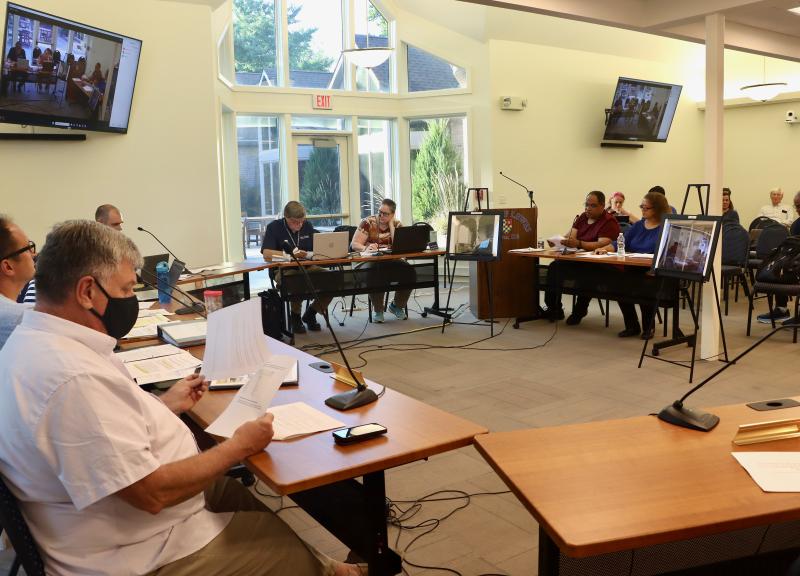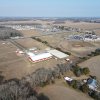The Lewes Historic Preservation Architectural Review Commission voted 4-2 to change the status of the Daisey property at 331 Chestnut St. from contributing to non-contribiting, paving the way for the house to be demolished.
“Thrilled. Pleasantly surprised and thrilled. I’m just stunned,” said Darnell Daisey minutes after the vote.
“It was an uphill battle. The board paid attention. They actually did review the material. We really do want a building that’s going to be nice, that really is going to fit in with the City of Lewes. We think this is a great town,” said Sarah Daisey Minor.
The Daiseys swayed the commission with a detailed and compelling presentation refuting the results of the second of two independent studies authorized by the city.
The study was done by the Dovetail Cultural Resource Group and found the house did meet enough criteria to be considered contributing to the Lewes Historic District.
But the Daiseys laid out evidence that, they said, showed errors, omissions and bias in the report.
They pointed out that their house was not included in a 2018 survey by the Center for Historic Architecture and Design that reassessed the contributing status of properties in the historic district.
The Daiseys’ rebuttal also stated that 331 Chestnut St. appears to have been carved out from the 1977 historic district boundaries because it was owned by an African American family at the time and essentially redlined. That refers to an illegal practice that has been used by some mortgage lenders to keep Black people out of certain neighborhoods.
The family proved that the house had been altered so much in at least the last 30 years that they did not even recognize it in old family photos.
“It was a lot of work. We didn’t know anything about architecture prior to getting into this,” Daisey Minor said.
“We’ve owned the house for 60 years. We have another house on Savannah Road that we’ve owned for 150 years. That one we’re keeping. The Savannah Road house is really the house of our family. This one here we lived in for five years. It really didn’t have the emotional significance,” Darnell Daisey said.
Commission members George Thomasson, Michael DiPaolo, Debra Evalds and Randy Burton voted in favor of changing the status. HPARC Chair Barbara Warnell and member Michael Weider voted against.
Their opposition focused on the desire to preserve the “Lewes vernacular” style house.
“Everything that’s been taken away from this house could be changed back,” said Warnell. “Houses throughout Lewes, if they were allowed to be demolished, we wouldn’t have a historic district. Our job is not to demolish houses, it’s to save the historic character of the town. Should this be a trigger in the future, we’ll be hard-pressed to turn a demolition down.”
Warnell listed several properties in the historic district that were restored and saved from demolition.
Those opposed were also concerned that changing this house would open the floodgates to other applicants wanting to tear down, rather than renovate their houses.
But, Commissioner George Thomasson’s view won the night.
“If this were a property that was sold recently, and an applicant came and said they wanted to tear it down, that would be a whole different consideration,” said Thomasson. “I’m convinced the Daisey family has proven to me that there have been significant alterations to this house to make it a non-contributing structure.”
Burton said HPARC members are passionate about Lewes, but the process has become over-politicized.
“It’s very disappointing how visceral it has become. I believe we have treated the Daisey family fairly, and they have treated us fairly. Although, from time to time, both sides have been caustic in their presentation,” he said.
The Daiseys’ supporters and neighbors spoke in favor of the demolition. Amy Dale lives across the street from the Daisey property and said she cannot wait to see a new home go up.
“I look at this house and it’s ugly. It’s falling apart. It’s gross,” she said.
Other supporters accused HPARC of condescending and racially biased tactics to try and stop the Daiseys.
“These folks have presented indisputable evidence and you seem to dismiss what they say. If we don’t agree with somebody, we just say it’s not true,” said Charlotte King, founder and chair of the Southern Delaware Alliance for Racial Justice.
Darryl Daisey said the next step in the process will come Thursday, Sept. 7, when the family will go back before HPARC at its regularly scheduled meeting to present the design for a new home to be built at 331 Chestnut St. He said if that design is approved, they will have one year to demolish the house and rebuild.
That meeting is scheduled for 6 p.m. at the Rollins Center.
Bill Shull has been covering Lewes for the Cape Gazette since 2023. He comes to the world of print journalism after 40 years in TV news. Bill has worked in his hometown of Philadelphia, as well as Atlanta and Washington, D.C. He came to Lewes in 2014 to help launch WRDE-TV. Bill served as WRDE’s news director for more than eight years, working in Lewes and Milton. He is a 1986 graduate of Penn State University. Bill is an avid aviation and wildlife photographer, and a big Penn State football, Eagles, Phillies and PGA Tour golf fan. Bill, his wife Jill and their rescue cat, Lucky, live in Rehoboth Beach.


























































